|
HOME: www.hiltonpond.org |
|||
|
"THE BLOB" INVADES HILTON POND: PREFACE: Late in our pre-teen years--1958, to be exact--Paramount Pictures released to movie houses a double-feature (remember them?) that scared us enough we stopped going out after dark for a few weeks. One of the films was I Married A Monster From Outer Space (movie poster below), in which human males are kidnapped by aliens who resemble them completely and desperately want to breed with human females because all their alien mates have gone extinct. These extraterrestrial imposters are impervious to everything except German Shepherds that rout the invaders and cause them to depart Earth ever-so-quickly in their silvery space ships. This was pretty straightforward science fiction that had no lasting impact on our psyche.
All text & photos © Hilton Pond Center The other flick--The Blob (movie poster below)--was far scarier and starred an amoeboid alien that hitchhikes inside a meteorite and lands in Phoenixville PA (apparently not far from our hometown of Pittsburgh). After emerging from the hot rock, The Blob consumes one human after another, increasing in size with each ingestion. This invertebrate creature flows hither and yon around Phoenixville until the penultimate scene in which it engulfs an entire diner with people inside. When fire erupts the diner owner grabs a fire extinguisher and discovers carbon dioxide foam causes The Blob to pull back its pseudopods. Employing true deductive reasoning, the hero--Steven (later "Steve") McQueen in his first "big" role--concludes the shapeless alien can't tolerate cold CO2 and gathers enough fire extinguishers to douse The Blob into half-frozen submission. An air force jet flies the now-inanimate Blob to the North Pole for safe keeping as the movie concludes with the words "The End" changing into a big question mark. That interrogative punctuation (?) was what scared us most and we spent several sleepless childhood nights worrying the big amoeba might somehow rejuvenate and return to consume us all.
All text & photos © Hilton Pond Center In one of life's little ironies, a few weeks ago we happened to be listening to an oldies radio station while driving back from West Virginia. We were surprised (and a little bit chilled) to hear half-century-old strains of "Beware Of The Blob"--the sci-fi movie's ominous theme song penned by then-unknown Burt Bacharach and Mack David (brother of Hal). Now that polar ice caps are melting at an unprecedented rate we even began to wonder if the formerly frozen Blob might thaw out and show up somewhere near--perhaps back home at Hilton Pond Center. With that frightening thought resurrected, you can guess what happened next . . . .
All text & photos © Hilton Pond Center This week we walked out on a pier on Hilton Pond and there . . . attached just below water level to a floating dock . . . waiting for us to come near was . . . YIKES! . . . THE BLOB! Well, it might not have been THE Blob--portrayed in that fifties-era cult film as a blood-thirsty blood-red amoeboid
All text & photos © Hilton Pond Center Bryozoans are indeed quite ancient creatures that originally inhabited primeval oceans along with trilobites and primitive chordates. Marine plants were plentiful at that time, but the only land "flora," if any, were algae and fungi and commensal lichens. Bryozoans continued to evolve and disseminate, and when freshwater pools became available a relative few became adapted to this new habitat. These days there are still plenty of bryozoans around--as many as 4,000 species worldwide and 500 marine varieties just in Australia's Great Barrier Reef. (German zoologist Ernst Haeckel's classic rendering above from the late 19th century illustrates several modern saltwater species and their attributes.) Despite their abundance in marine habitats, however, only about 20 or so freshwater bryozoan species can be found across North America.
All text & photos © Hilton Pond Center So exactly what were these blobby creatures (above) we found lurking in Hilton Pond? First of all, bryozoans are invertebrate multicelled aquatic animals in their own phylum, the Bryozoa, which means "moss animals"--so-called because some crust-like species resemble delicate little moss plants. Most bryozoans form sessile (immobile) colonies consisting of many individual "zooids" that are more or less interdependent.
All text & photos © Hilton Pond Center Colonial zooids typically are bound together in a case made of chitin or calcium carbonate (usually configured in the shape of a crust, fan, or antler), or of a more-or-less slimy gelatinous substance that forms a "blob." In the aggregate, calcareous bryozoans (those that form calcium cases) can leave large fossil deposits (above) that resemble those from corals or sponges; gelatinous colonies are less likely to fossilize and leave almost no mass when they do. Healthy bryozoan colonies enlarge by "budding," a process through which individual zooids make multiple clones of themselves; new colonies arise either from fragmentation (in which part of a colony breaks off and floats to new substrate) or sexual reproduction (with eggs from one colony being fertilized by sperm from another). Needless to say, bryozoans can be quite prolific.
All text & photos © Hilton Pond Center We're not expert on bryozoan taxonomy and lifestyles, but we're pretty confident the blobs colonizing our Hilton Pond pier are the Magnificent Bryozoan, Pectinatella magnifica, characterized by an irregular, translucent, gelatinous mass (99% water) and an outer surface marked underwater by whitish star-shaped rosettes (above) that under a hand lens are shown to be comprised of a dozen or so zooids. Such blobs are sometimes mistaken for egg masses of frogs or aquatic insects. Colonies of this freshwater "moss animal" can reach diameters of six feet or more and sometimes take on a purple hue.
All text & photos © Hilton Pond Center As we looked around the dock area we discovered several more colonies both on the float and on the underwater posts that held up the pier. (We suspect lots of other bryozoan colonies were attached to submerged sticks and logs elsewhere in the pond.) Since the species appears to be thriving locally, we used a sharp knife to cut away a small portion of one colony for closer examination and placed it in a white bucket filled with pond water. Out of the sunlight and against a lighter background the blob looked very different; the white rosettes now appeared dark and almost fractal-like (above).
All text & photos © Hilton Pond Center Even more interesting, when we placed the colony fragment into our bucket, it seemed smooth. After leaving the bucket undisturbed for several minutes the colony then changed its appearance and became fuzzy-looking (above)--the result of thousands of zooids coming out of individual chambers and starting to wave their tentacles.
Out of water the clear jelly that makes up most of a colony's mass was easily seen (above left). However, if we re-submerged the blob the rosette-covered surface remained visible while the jelly disappeared completely--meaning pond water and bryozoan jelly must have the same refractive index. (We thought this was pretty cool; it would make a nice biology-related demonstration for up-and-coming physics students studying light and matter.) Incidentally, the reddish-brown worm-like creature (above right) tunneling within the clear jelly appears to be the larval stage of a chironomid--one of the non-biting midges. Larvae of these mosquito-sized flies are often commensal with freshwater bryophytes; i.e., the two species live together but neither one hurts or particularly benefits the other. Originally found in the U.S. east of the Mississippi River, the Magnificent Bryozoan now occurs at numerous disjunct locales across North America; Although considered invasive outside its historical range that also includes Europe, Japan, and Korea, the Magnificent Bryozoan seems to cause few problems other than clogging drainage pipes in some lakes and along rivers. (Some locales do report problems with bryozoans at water treatment plants.) The species' natural predators are snails, insect larvae, and fish. We should point out that some ecologists are concerned big populations of filter-feeding P. magnifica can clarify bodies of water so efficiently that more sunlight reaches the lake bottom, allowing accelerated aquatic plant growth that in turn upsets a lake's natural balance.
All text & photos © Hilton Pond Center One other thing about bryozoans we never would have known had we not put part of a colony in our white bucket: Just a few hours after we collected the sample blob the bottom of the bucket became littered with very, very small brownish specks. These were solid waste pellets produced by zooids and eliminated through their only-slightly-larger anal openings. If mammal droppings are called "scat," if birds excrete "whitewash," and if caterpillars make "frass," we wonder if there's a special name for fecal fragments from a bryozoan. We bet there isn't, so as of right now we're calling it "broop." (Please ignore any other scatological definitions you might find for this word, including one from Brandeis University.)
All text & photos © Hilton Pond Center In their aquatic habitats bryozoan colonies are active day and night, with individual zooids constantly waving their tentacles to filter food particles from surrounding water. (The ghostly images above and below of Magnificent Bryozoan zooids in action were taken with our Canon 7D and MP-E 65mm macro lens set to 3:1 and 4:1, respectively.) We had seen freshwater bryozoans only once before a few decades ago while swimming at a recreational park on Lake Wylie near Rock Hill SC and hoped someday to find a few in our one-acre impoundment at Hilton Pond Center.
All text & photos © Hilton Pond Center As filter feeders their presence indicates good quality water rich in nutrients, so we were pleased this spring to finally find bryozoan blobs close to home. Had these interesting organisms emerged from water this week to attack we would have known they were fearful "Sons and Daughters of The Blob," and we would have followed the lead of Steve McQueen--freezing the little monsters with carbon dioxide from whatever fire extinguishers we could find. Fortunately, however, each jelly-like colony was a bunch of harmless water-cleansing bryozoan zooids--NOT offspring of The Blob from outer space that in 1958 struck fear in the hearts of young and old alike. Knowing that, we'll sleep better now. All text & photos © Hilton Pond Center All contributions are tax-deductible POSTSCRIPT: After we posted the photo essay above, we heard from a Web site visitor that The Blob in the movie was red because it wasn't really an alien invader after all. Gail Mackierman writes: "In the scene where The Blob invades the movie house, the theater was a small model and The Blob was played by several jars of raspberry jam squeezed (off-camera) from a tube! Now whenever I see the movie on TV--it occasionally shows up--I get a hankering for some nice warm toast." (Now we feel REALLY silly about our childhood fears of The Blob!) |
|---|
 The Piedmont Naturalist, Volume 1 (1986)--long out-of-print--has been re-published by author Bill Hilton Jr. as an e-Book downloadable to read on your iPad, iPhone, Nook, Kindle, or desktop computer. Click on the image at left for information about ordering. All proceeds benefit education, research, and conservation work of Hilton Pond Center for Piedmont Natural History. The Piedmont Naturalist, Volume 1 (1986)--long out-of-print--has been re-published by author Bill Hilton Jr. as an e-Book downloadable to read on your iPad, iPhone, Nook, Kindle, or desktop computer. Click on the image at left for information about ordering. All proceeds benefit education, research, and conservation work of Hilton Pond Center for Piedmont Natural History. |
|
|
"This Week at Hilton Pond" is written and photographed by Bill Hilton Jr., executive director of Hilton Pond Center for Piedmont Natural History
|
|
|
Please refer "This Week at Hilton Pond" to others by clicking on this button: |
Comments or questions about this week's installment? Send an E-mail to INFO. (Be sure to scroll down for a tally of birds banded/recaptured during the period, plus other nature notes.) |

Click on image at right for live Web cam of Hilton Pond,
plus daily weather summary
Transmission of weather data from Hilton Pond Center via WeatherSnoop for Mac.
|
--SEARCH OUR SITE-- For a free on-line subscription to "This Week at Hilton Pond," send us an |
|
Thanks to the following fine folks for recent gifts in support of Hilton Pond Center for Piedmont Natural History and/or Operation RubyThroat: The Hummingbird Project. Your tax-deductible contributions allow us to continue writing, photographing, and sharing "This Week at Hilton Pond" with students, teachers, and the general public. Please see Support or look below if you'd like to make a gift of your own.
|
If you enjoy "This Week at Hilton Pond," please help support Hilton Pond Center for Piedmont Natural History. It's painless, and YOU can make a difference! (Just CLICK on a logo below or send a check if you like; see Support for address.) |
|
Make credit card donations on-line via Network for Good: |
|
Use your PayPal account to make direct donations: |
|
If you like shopping on-line please become a member of iGive, through which 950+ on-line stores from Amazon to Lands' End and even iTunes donate a percentage of your purchase price to support Hilton Pond Center.  Every new member who registers with iGive and makes a purchase through them earns an ADDITIONAL $5 for the Center. You can even do Web searches through iGive and earn a penny per search--sometimes TWO--for the cause! Please enroll by going to the iGive Web site. It's a painless, important way for YOU to support our on-going work in conservation, education, and research. Add the iGive Toolbar to your browser and register Operation RubyThroat as your preferred charity to make it even easier to help Hilton Pond Center when you shop. Every new member who registers with iGive and makes a purchase through them earns an ADDITIONAL $5 for the Center. You can even do Web searches through iGive and earn a penny per search--sometimes TWO--for the cause! Please enroll by going to the iGive Web site. It's a painless, important way for YOU to support our on-going work in conservation, education, and research. Add the iGive Toolbar to your browser and register Operation RubyThroat as your preferred charity to make it even easier to help Hilton Pond Center when you shop. |
|
BIRDS BANDED THIS WEEK at HILTON POND CENTER 11-21 May 2012 |
|
|
SPECIES BANDED THIS WEEK: * = New species for 2012 WEEKLY BANDING TOTAL 10 species 48 individuals 2012 BANDING TOTAL 31-YEAR BANDING GRAND TOTAL (since 28 June 1982, during which time 170 species have been observed on or over the property) 126 species (31-yr avg = 66.4) 57,408 individuals (31-yr avg = 1,852) NOTABLE RECAPTURES THIS WEEK Northern Cardinal (8) Carolina Wren (1) Eastern Tufted Titmouse (4) Downy Woodpecker (2) House Finch (4) All text & photos © Hilton Pond Center
|
OTHER NATURE NOTES: --The good banding news thus far is our two Barred Owls, inasmuch as they were the first we've ever captured and the 126th species banded at the Center since 1982. (Wrote about Owl #1 two installments back, so for the record we should mention Owl #2 on 12 May got us pretty good with a talon, "footing" us through two knuckles on the right hand. Amoxicillin apparently cured our staph infection before it ran rampant, but it took more than a week for the swelling to go down.) --On our next net check after we caught the second Barred Owl we were surprised to snare another raptor: An adult Red-shouldered Hawk, just our tenth-ever at Hilton Pond. It was a good way to celebrate this year's International Migratory Bird Day. --Significant this week were the recaptures of two old male Northern Cardinals--both banded in 2007. --Ruby-throated Hummingbirds numbers are also down this spring at Hilton Pond Center. After spotting our first hummer on 28 March we finally netted two shortly before dusk on 11 May--both adult males with bright red gorgets. One was a return banded locally last year. We caught another old male RTHU on 12 May and then in a flurry of activity on 19 May banded three new RTHU (including the year's first two females) and caught four returning females (one from 2008 that is now an after 5th year bird). --We had 3.2" of much-needed precipitation on 13-17 May, the most on 14 May (2.02"). Hilton Pond welcomed the downpour. Bookmark KSCYORK4 for on-going weather updates at the Center, courtesy of WeatherUnderground. The page includes a near-real-time Web cam view of the pond itself. We'd be happy if it rained this much every week and returned the pond to full depth--something we haven't seen in quite a few years. All text & photos © Hilton Pond Center |








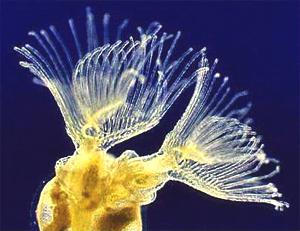 Within a colony, some zooids are responsible for feeding and excretion, some play defensive or cleaning roles, while still others may serve as hatcheries for new zooids. Each individual feeding zooid has a "crown" of ciliated tentacles that filter water for food particles.
Within a colony, some zooids are responsible for feeding and excretion, some play defensive or cleaning roles, while still others may serve as hatcheries for new zooids. Each individual feeding zooid has a "crown" of ciliated tentacles that filter water for food particles. 
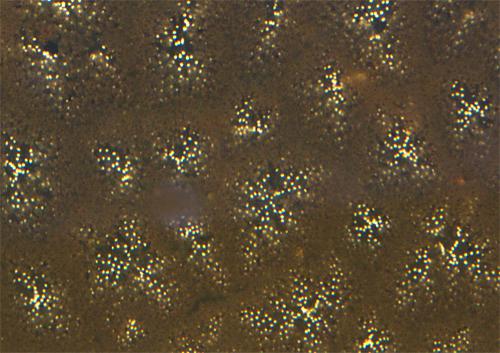
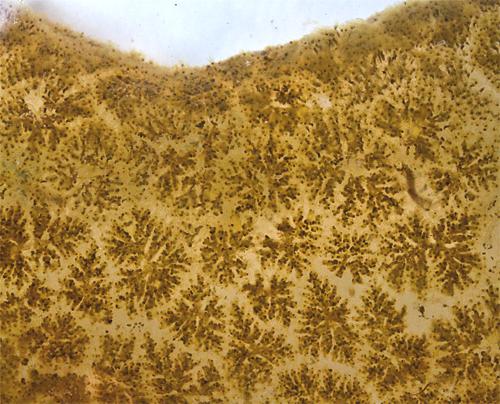
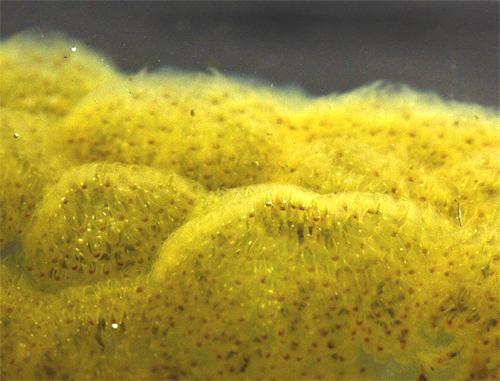
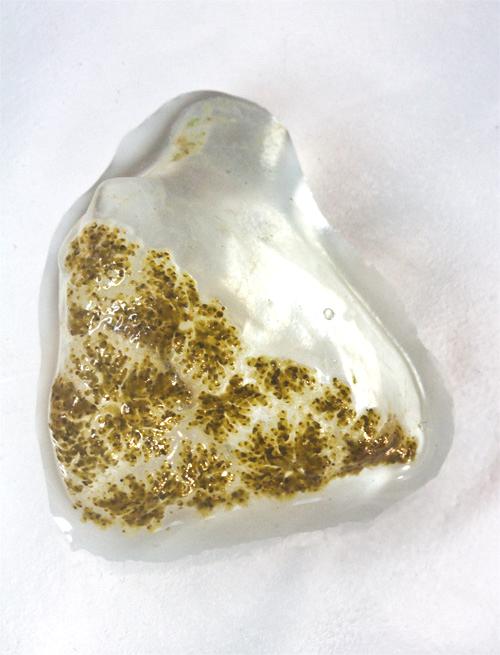
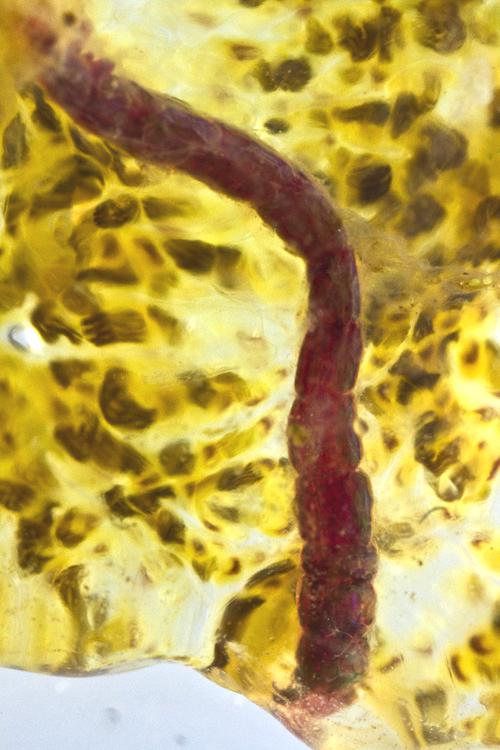
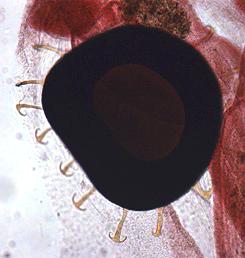


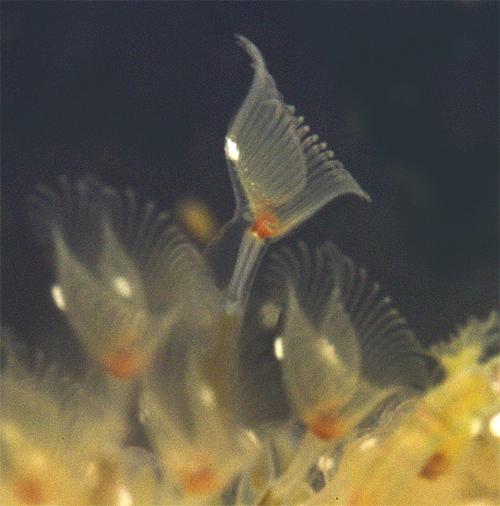


 Please report your sightings of
Please report your sightings of